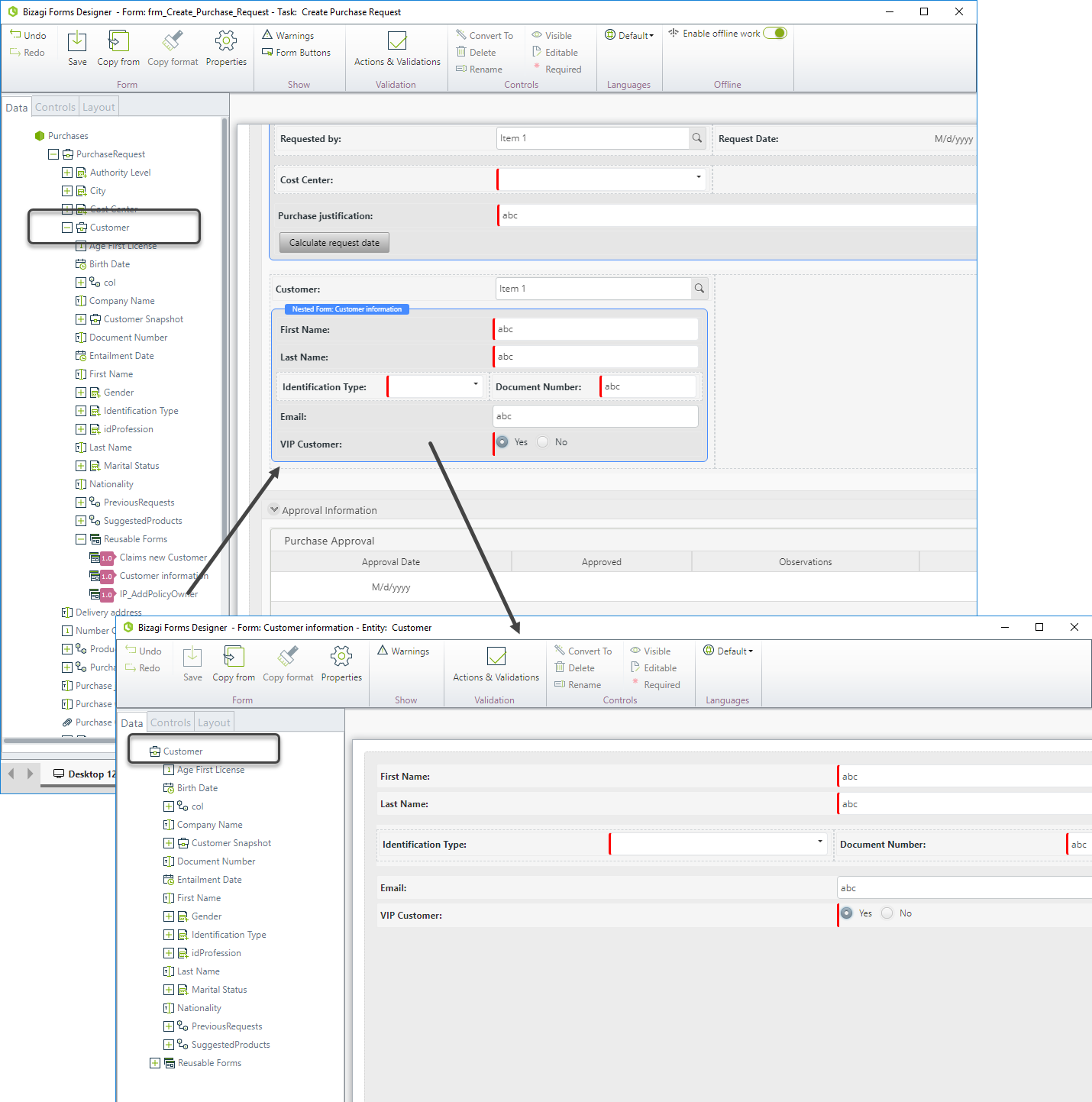Recall that the Context is the starting point of the data model that determines how the user navigates through the set of attributes and how the information is built.
Context in activity forms
When you open the Forms Designer form the third step of the Process Wizard, you will see in the Data tab your Process Entity, as the basis of the model where you will drag and drop all attributes used in forms.
Thus, the context of the forms created from the Process Wizard is always the Process Entity.

However there are scenarios where the context of the forms is NOT the Process Entity. In this cases you will navigate the data model from another entity. These scenarios are:
•Add and Edit forms in Table control
•Search From in Search control
•Nested forms
Context using Table control
Tables have a very powerful functionality that allow the end user to include (or edit) records in an independent window where any type of control can be used. Remember that to use a Table there must be a Collection defined.
Thanks to the Add and Edit forms the developer can request any information that the business needs to make sure each new record is as complete as desired. The developer can even include a Table within the Add and Edit form of the first Table.
When the end user clicks on the Edit or Add icon in the Work Portal, he/she is taken to a new window where the information is presented.
This new window has a change of Context. In the Add and Edit forms we are accessing specific information of the Collection and using controls that apply only to that collection. Thus, in the Add and Edit forms of a Table the context is the Collection entity.

|
This also applies to validation rules related to the Add and Edit forms of the Table. They too will have the Collection entity as Context. Thus, when using XPath, the first entity to navigate the data model is the Collection. |
Context using Search control
The Search control requires a Search form for the end user to be able to perform a search in the Work Portal.
The Search form is a special type of form that contains two sections: one that displays the search criteria and one that displays the results.
When using Search controls, it is important to know that the context of the Search form is the entity where the search is performed.

Context in nested forms
Nested forms are forms created to be reused through a project. You can create a single form with the attributes and properties you need and use it several times, when you want to display the exact same information in several Activities.
When these reusable forms are included within a form they are displayed with a Nested form highlight.
You can create these forms in any entity to obtain the information required. Then, you can drag and drop them into any other form, just like dragging and dropping any control. Since these forms are built in any entity, the entity in which nested forms are built is their context and it cannot be changed.

Last Updated 1/6/2022 11:31:31 AM